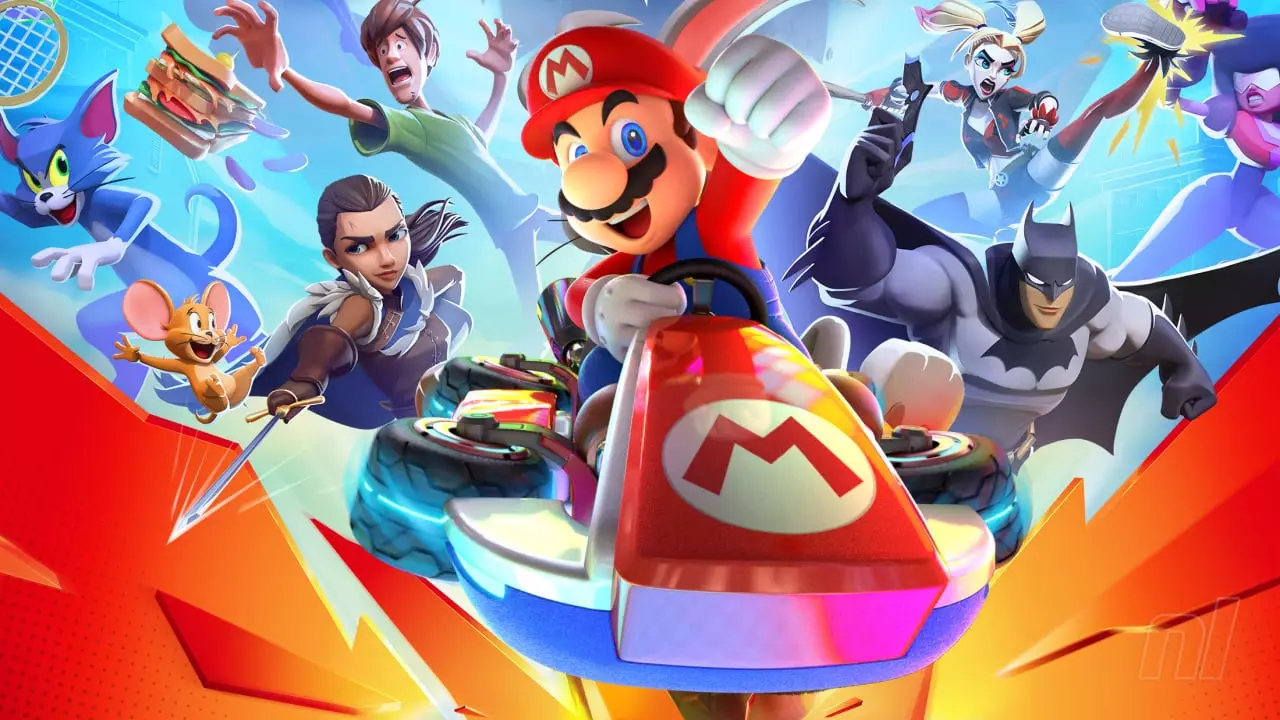In an unexpected move, Warner Bros. recently announced the closure of three studios, including Player First, the creative force behind the brawler MultiVersus. This news left fans scratching their heads, especially considering the potential that lay within the Warner Bros. gaming division. Amidst the chaos, whispers of a cancelled project surfaced; a racing game inspired by Nintendo’s iconic Mario Kart franchise, codenamed ‘Moonlight’. Such revelations ignite speculation and nostalgia, highlighting the fleeting nature of innovation within the gaming industry.
The Genesis of Project Moonlight
Before the onset of the COVID-19 pandemic, WB San Diego ventured into uncharted territory with Project Moonlight. Sources indicate that the studio brainstormed ideas for a racing game that would draw upon a plethora of beloved Warner Bros. Intellectual Properties (IPs). Imagine zipping through vibrant tracks as characters from Adventure Time, Tom & Jerry, and Scooby-Doo! The sheer potential of these characters engaging in wild kart races drew attention, tapping into the nostalgia of older fans while promising excitement for new players as well.
This collaborative venture aimed to create a unique experience, built on the powerful Unreal Engine 5, promising stylized graphics that could entice players who appreciate visual artistry as much as gameplay. Initial title ideas, including ‘WB Racers’ and ‘XDR (Cross Drift Racers)’, suggested a playful yet competitive take on the genre. However, the reality of development in the gaming sector can often differ starkly from idealistic visions, and Project Moonlight was destined to encounter challenges.
Challenges: Internal Struggles and Unclear Direction
The concept of Project Moonlight seemed brimming with promise, but the execution proved problematic. Consistent staff rotations plagued the project, leaving it devoid of stability and vision. Furthermore, internal disagreements about the game’s release model—free-to-play versus a paid title—created rifts within the development team. With the industry rapidly evolving, clarity regarding monetization became crucial, yet the indecision only added stress to the already fragile environment.
The decision to abandon console versions altogether was particularly disheartening. An ambitious project born in a time of hope and creativity lumbered towards an uncertain future. As the status of Player First and its successful launch of MultiVersus loomed like a dark cloud, animosity brewed among team members who felt left out of the limelight. It’s a harsh reality when creative teams witness their peers experience success, while their hard work goes unrecognized.
The Competitive Landscape: Finding a Niche
The void left by the absence of Mario Kart has prompted numerous franchises, including Disney and DreamWorks, to dip their toes into kart racing, yet none have managed to replicate the magic that Nintendo has built over decades. This persistent trend underscores a reality: simply slapping popular characters onto racing tracks doesn’t guarantee success. Competitive racing is more than character recognition; it’s about the balancing of gameplay mechanics, inventive design, and captivating gameplay.
This raises a crucial question: Could Warner Bros. genuinely have carved out a space in the kart racing genre with Project Moonlight? Considering the mixed fate of MultiVersus, one might argue that a Warner Bros. styled racer would have struggled to resonate with audiences, risking the company’s already fragile position within the gaming community.
A Missed Opportunity for Innovation
The failure to launch Project Moonlight is a poignant reminder of gaming’s fickleness, where the fate of ambitious ideas rests on the shifting sands of corporate strategy and market demands. The potential for a vibrant, character-driven racing game seemed to ignite excitement and curiosity among fans, yet the untimely closures snuffed out any glow of hope.
As the industry simultaneously yearns for innovation and leans heavily on established franchises, the challenge remains to refine and reinvigorate beloved concepts, while offering something fresh. Warner Bros. had an intriguing concept in Project Moonlight, yet the convergence of internal turmoil and external expectations condemned it to an early grave.
The landscape of gaming thrives on experimentation—sometimes overt and other times subtle—but now, with another flicker of promising potential flickered out, one can only hope that future endeavors will revive the spirit of collaborative creativity that once appeared on the horizon. The question remains, what could have been if that adventurous spirit had prevailed?


Leave a Reply